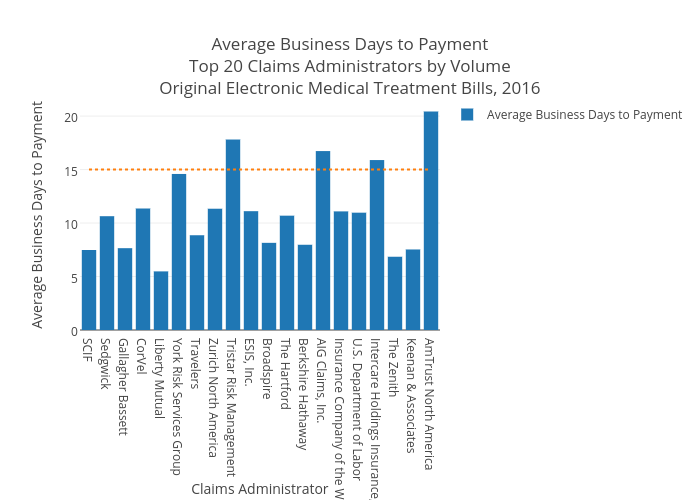Place of Service and Work Comp Bills: Oh, the Places You'll Code

The early weeks of 2017 saw a torrent of significant changes to the California workers’ comp system. Last week on the blog, we singled out the addition of a new Place of Service Type and Code for telehealth as an intriguing component of the forthcoming Physician and Non-Physician section of the Official Medical Fee Schedule (OMFS). Today, we take a closer look at what a Place of Service is and what it means for providers.
On its face, the Place of Service is quite easy to understand – it’s the setting in which a patient received medical service. So far, so simple.
It quickly gets more complicated. The California Division of Workers’ Compensation (DWC) adopted the Resource-Based Relative Value Unit (RBRVU) fee schedule at the onset of 2014, along with two separate reimbursement formulas. The appropriate reimbursement formula is chosen based on the Place of Service Type – either a Facility (F) or Non-Facility (NF) – where the patient received care.
To determine whether a particular place of service is a facility or non-facility, you should reference California Code of Regulations § 9789.12.2. This regulation provides a table listing various place of service types, their unique Place of Service Code, and corresponding facility or non-facility designation. Examples of Facility (F) places of service include in- and outpatient hospitals, hospital emergency rooms, and ambulances. Examples of Non-Facility (NF) places of service include provider offices, pharmacies, group homes, places of employment and urgent care centers.
Generally speaking, reimbursements for services provided in a facility are lower than reimbursements for services provided in a non-facility. This is because care provided in a facility setting does not incur practice overhead expenses. As we discussed last week, telehealth is designated as a facility service – even if the physician provides the telehealth service from a location that would otherwise be considered non-facility, such as the provider’s office. In other words, the telehealth designation as a facility place of service reflects the lower overhead expenses incurred by physicians when delivering telehealth services.
The Place of Service Code that corresponds with a particular place of service can also be found in California Code of Regulations § 9789.12.2. The Place of Service Code is a two-digit number used on billing or claims forms that indicates where a service was provided. The new Place of Service Code for telehealth, for example, is 02.
Armed with the information in Regulation 9789.12.2, you can manually calculate payment amounts for the 2017 Physician and Non-Physician Fee Schedule using one of the two formulas below:
2017 Non-Facility Pricing Amount =
[(Work RVU * Work GPCI) + (Non-Facility PE RVU * PE GPCI) + (MP RVU * MP GPCI)]
* Conversion Factor (CF)
2017 Facility Pricing Amount =
[(Work RVU * Work GPCI) + (Facility PE RVU * PE GPCI) + (MP RVU * MP GPCI)]
* Conversion Factor (CF)
Each formula requires three Relative Value Units. For dates of service on or after March 1, 2017, the DWC will use Medicare’s new RVUs. You may download the 2017 Quarter 1 RVUs, or RVU17A, from the Medicare website by clicking this link.
DaisyBill’s OMFS calculator – a component of each of our three workers’ comp billing software solutions – automatically handles the reimbursement calculation. You must simply choose the place of service type – facility or non-facility – before entering the CPT codes used in treatment.
To learn more about the 2017 Official Medical Fee Schedule – including detailed looks at places of service and reimbursement calculations – watch our webinar below.
2017 WORK COMP OMFS CHANGES
DaisyBill provides content as an insightful service to its readers and clients. It does not offer legal advice and cannot guarantee the accuracy or suitability of its content for a particular purpose.



.gif)
